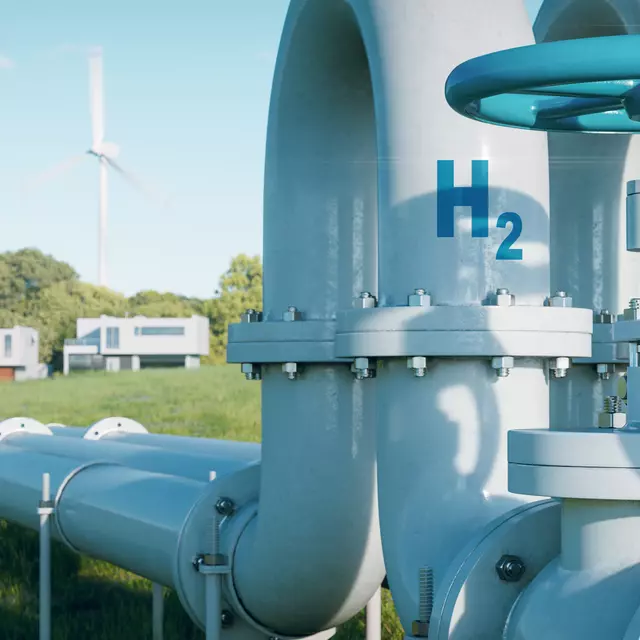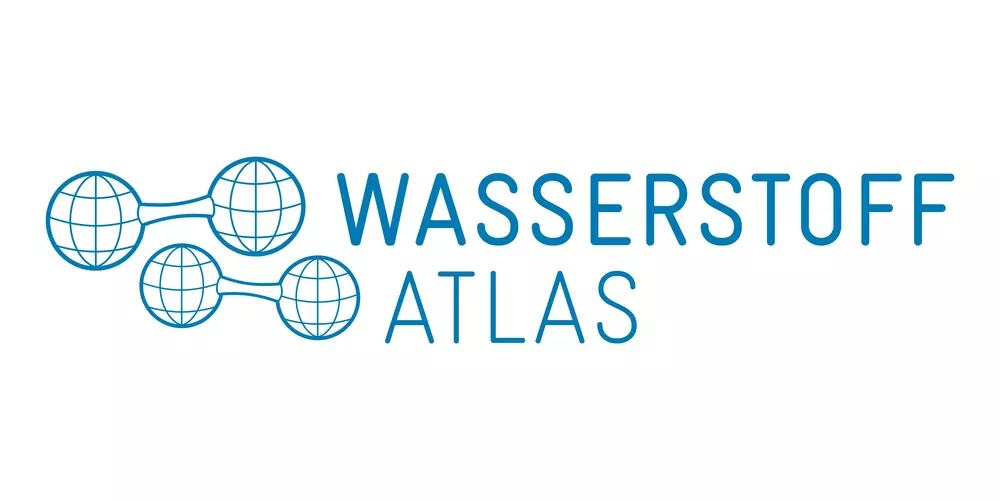Hydrogen
Hydrogen plays a central role in the energy transition and the decarbonization of industrial processes. As a versatile energy carrier and chemical raw material, it has the potential to both replace fossil fuels and reduce greenhouse gas emissions in energy-intensive sectors. The use of hydrogen ranges from energy supply to the transport sector and industrial applications as an energy carrier and raw material.


Hydrogen
Potential of hydrogen
Hydrogen is the most common chemical element in the universe and plays a central role in the energy transition. On earth, it is mainly found bound in water, natural gas and crude oil. It is usually produced on an industrial scale via steam reforming or partial oxidation, which produces carbon dioxide, resulting in grey hydrogen . A climate-neutral alternative is green hydrogen from electrolysis, in which water is broken down into hydrogen and oxygen. Hydrogen can be stored and transported under high pressure or in liquefied form, including pipelines or as an admixture in the natural gas grid. It is used both materially in the chemical industry to produce ammonia and methanol and energetically in fuel cells to generate electricity. As an energy storage medium, hydrogen can be produced in a climate-neutral way, transported easily and used in a variety of ways without generating pollutants, making it an essential building block for a climate-neutral economy. The development of a cross-sector hydrogen economy is crucial for achieving the climate targets by 2045. The development of green hydrogen produced with renewable electricity enables climate-neutral chemical processes and relieves the burden on the electricity grid. The transformation to a climate-neutral global economy requires innovation, planning security and the will to implement in order to offer long-term solutions to the climate problem and security of supply. The potential that hydrogen has to offer in Germany can be found in the "Hydrogen Atlas" project at OTH Regensburg. International relations and hydrogen trade are highlighted in the "H2Global meets Africa" project.
Areas of application for hydrogen
Hydrogen can be used in various forms and areas in the energy system. One area of application is its use as an energy storage medium for long-term storage over months or years. Another is its use as a fuel in mobility, as an industrial raw material or as a substitute for fossil fuels in electricity and heat generation.
In the transport sector, hydrogen offers considerable advantages, particularly for applications with high range requirements and large payloads, such as heavy goods vehicles, rail transport or shipping. Fuel cell electric vehicles (FCEVs) use hydrogen to generate electricity for propulsion, allowing them to be operated emission-free. Hydrogen is also a promising option for synthetic fuels in aviation. The use of green hydrogen in the transport sector can make a significant contribution to reducing greenhouse gas emissions and achieving climate targets.
Hydrogen plays a crucial role in the decarbonization of industry, especially in processes that are difficult to electrify. In the steel industry, hydrogen is increasingly being used as a reducing agent in the Direct Reduced Iron (DRI) process to replace coal and significantly reduce CO₂ emissions. Hydrogen is also an indispensable raw material in the chemical industry, for example in the production of ammonia for fertilizers and methanol. Switching to green hydrogen, which is produced using renewable energy, could drastically reduce emissions from these processes and make the industry more climate-friendly. The questions of how fossil raw materials in industry can be substituted by hydrogen or its derivatives and how the sector can be completely defossilized by 2050 are part of the "P2X Kopernikus" and "Hydrogen Atlas" research projects.
The heating market is a complex utilization sector in which the switch to renewable energies is relevant in addition to efficiency measures in order to achieve the climate protection targets. In a study commissioned by the National Hydrogen Council (NWR), hydrogen requirements were identified in particular in the areas of district and process heat supply. In this context, hydrogen-based combined heat and power (CHP) systems are highly relevant, as these systems can easily replace fossil-fueled combined heat and power (CHP) plants and contribute to a sustainable energy supply. In this context, OTH Regensburg is working on the "Living H2" research project, which involves the installation and safe operation of a hydrogen-powered CHP unit in a typical domestic environment with techno-economic, ecological and social investigations and evaluations of the system.
Market ramp-up of hydrogen
The market ramp-up of green hydrogen and its derivatives is financially supported by various instruments in individual countries and at European level. At European level, the first auctions were carried out and evaluated via the European Hydrogen Bank (EHB). In addition, the Climate Protection Agreements (KSV) promote industrial plants in Germany that are switching from fossil fuels to climate-friendly energy sources. Internationally, the Inflation Reduction Act (IRA) in particular plays a key role in the market ramp-up of low-emission hydrogen.
In a research project at OTH Regensburg, the focus is on analyzing these and other instruments that support the ramp-up of international hydrogen markets. The aim is to classify the development and results of the various instruments, assess possible effects and draw up proposals for the further development of instruments so that political and economic goals can be pursued and achieved during the ramp-up phase. These include, above all, the establishment of initial supply, logistics and value chains, the development of domestic production and use, the underpinning of hydrogen partnerships, the creation of import corridors and an impetus for global commodity markets in cooperation with neighboring European countries. This is based on different time horizons on the one hand, and strategic preferences and targets on the other. This requires a detailed analysis of hydrogen and its derivatives.





